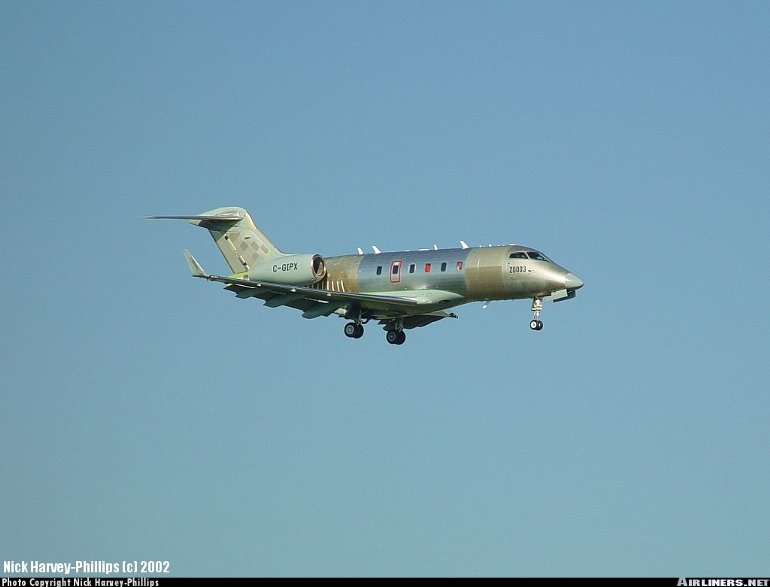Aircraft Technical Data
Bombardier BD-100 Challenger 300

| Details | |
| Country of Origin | Canada |
| Type | Super mid size corporate jet |
| History | Bombardier's all new Challenger 300 is a transcontinental range eight-seat corporate jet which will sit in the company's model line-up between the Learjet 60 and Challenger 604. It is developed for a non-stop 5471km (3100nm) mission with a load of eight passengers and NBAA IFR reserves. Bombardier revealed it was developing the Continental (as it was known then) at the 1998 National Business Aircraft Association's annual convention in Las Vegas in October 1998. The program was officially launched at the Paris Air Show on June 13, 1999. It would compete for what Bombardier sees as a market for 1230 super mid size corporate jets by 2012. The Continental was renamed Challenger 300 on September 9, 2002. The new jet will compete with the Hawker Horizon and Galaxy, among others. Bombardier claims the Continental will offer 39% more cabin space and 20% more range "than the leading mid size business jet". It is also claimed to have a larger cabin than the intercontinental range Falcon 50 and high speed Citation X. Features of the Challenger 300 are a cockpit equipped with Collins Pro Line 21 four-tube EFIS, EICAS, TCASII, and EGPWS avionics, a standard eight place double club interior with galley and toilet, stand-up headroom, a flat floor, an auxiliary power unit and thrust reversers, all metal construction and a large area wing for good field performance. The Challenger 300 has a primarily light-alloy structure, with composites used for some non-structural items. The fuselage is of a semi-monocoque construction with frames and stringers. The wing has two spars. The first Continental risk sharing partner is AlliedSignal, which will supply its new FADEC equipped AS-907 turbofan to power the new jet, as well as the engine nacelles and thrust reversers. The AS-907 itself is developed with a number of partner companies, with AIDC of Taiwan selected to provide the fan. Wing/fuselage mating of the first aircraft was achieved on November 19, 2000. The first flight was made on August 14, 2001, and certification is due in the third quarter of 2002. The aircraft will start corporate service in 2003. The Challenger 300 made its official debut at Orlando Executive Airport on September 8, 2002 at the NBAA Convention. At that time, four aircraft were flying in the test program. |
| Powerplants | Two 28.9kN (6501lb) Honeywell AS-907 turbofans |
| Performance | High speed cruising speed 870km/h (470kt) or Mach 0.82, normal cruising speed 850km/h (460kt) or Mach 0.80. Balanced field length 1510m (4950ft), landing distance 792m (2600ft). Max operating altitude 45,000ft, initial cruise altitude 41,000ft. Max range with 8 passengers and NBAA IFR reserves at Mach 0.80 5740km (3100nm). |
| Weights | Basic operating 10,140kg (22,350lb), max takeoff 17,010kg (37,500lb). Max payload 1360kg (3000lb). |
| Dimensions | Wing span 19.46m (63ft 10in), length 20.93m (68ft 8in), height 6.20m (20ft 4in). Wing area 48.5m2 (522.0sq ft). Internal dimensions include a length of 8.72m (28ft 7in), height 1.85m (6ft 1in) and max width 2.19m (7ft 2in). |
| Capacity | Flightcrew of two. Typical cabin arrangement for eight, with a two seat lounge opposite two facing seats, with club seating for four behind them, or double club seating. Features a forward wardrobe, refreshment centre and toilet. A high-density interior for 15 pax is also available |
| Production | As of June 2001, 115 had been ordered. |
| Related Links | Bombardier BD-100 Challenger 300 |
The backbone of this section is from the The International Directory of Civil Aircraft by Gerard Frawley and used with permission. To get your own copy of the book click here. |
|








